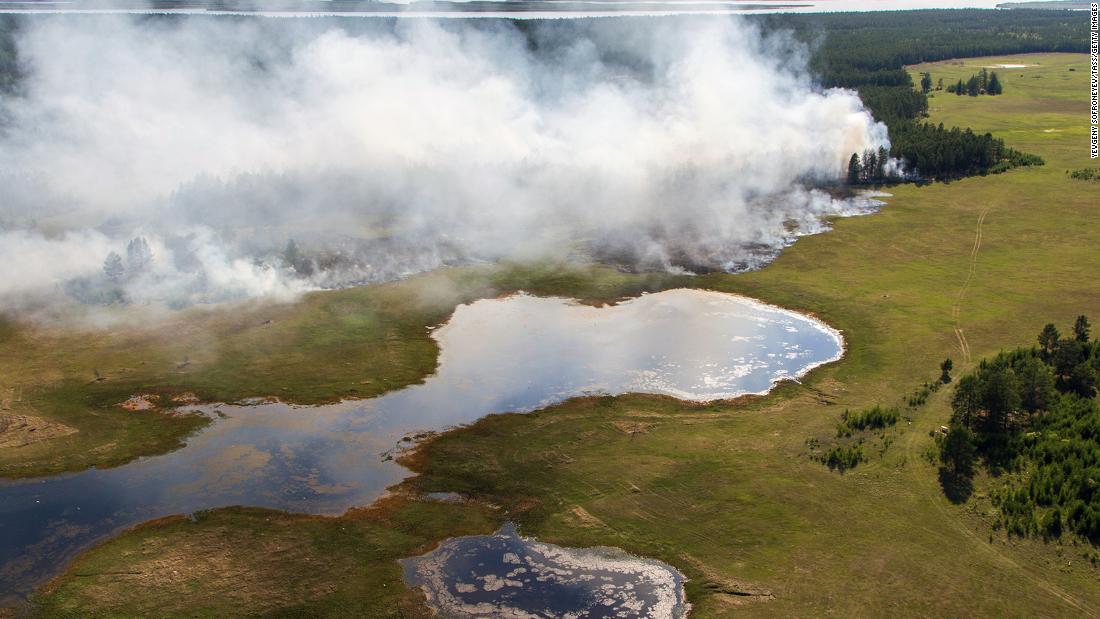Siberia has recorded its warmest June, says Copernicus’ atmospheric surveillance service

Siberia is one of the coldest areas on Earth, but is currently battling strong fires and record high temperatures.
Surface carbon dioxide emissions for June were the highest in 18 years of CAMS data, erasing the record of 53 megatons set in June 2019.
“Higher temperatures and drier surface conditions provide ideal conditions for these fires to burn and last so long in such a large area,” said CAMS senior scientist Mark Parrington.
“We have seen very similar patterns in fire activities and soil moisture anomalies across the region in our fire monitoring activities in recent years.”
Temperatures in the region were up to 10 degrees Celsius (18 degrees Fahrenheit) in June above average.
In Siberia, large temperature changes occur from month to month and from year to year. But temperatures in the region have remained well above the 2019 average, which is unusual.
June temperatures across Siberia were more than five degrees Celsius (nine degrees Fahrenheit) higher than average and more than one degree Celsius (1.8 degrees Fahrenheit) higher than the same month in 2018 and 2019, the two previous warmest June.
But not all parts of the region are affected. Western Siberia recorded mostly below-average temperatures last month.
The entire planet recorded record temperatures last month, linking to 2019 for the warmest June at a record level, of 0.53 degrees Celsius (0.95 degrees Celsius) above the 1981-2010 average.
In 2020, Copernicus found that four of the first six months of the year were the warmest globally or related to previous record temperatures. The exceptions were February and March 2020, which were the second warmest recorded in the world.
“Discovering what caused these record temperatures is not straightforward as many contributing factors interact. Siberia and the Arctic Circle generally have large fluctuations from year to year and have experienced other relatively warm June before,” said C3S director Carlo Buontempo. “What’s worrying is that the Arctic is warming faster than the rest of the world.”
The Arctic is warming twice as fast as the rest of the planet through a process known as Arctic reinforcement.
Arctic ice melting has accelerated, leading to seasonal snow cover that is not as white and absorbs more sunlight, leading to more warming, according to the National Oceanic and Atmospheric Administration (NOAA).
CS3 researchers believe large-scale wind patterns in Siberia, low snow cover and surface soil moisture may have led to milder temperatures this spring.

Zombie aficionado. Typical introvert. General creator. Beer practitioner. Web fan. Music nerd.






